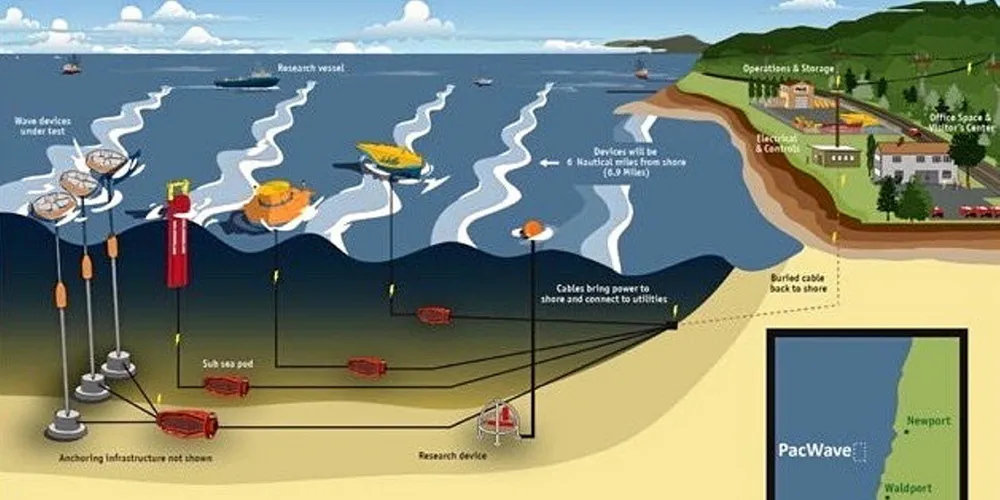New wave? US injects $25m to spur ocean energy technologies to market in slow-boat sector
Winners of Department of Energy grants will install prototypes at country's first wave energy testing centre, PacWave off Oregon, with view to taking designs from lab to open water

The US Department of Energy (DOE) has awarded $25m in grants to eight companies, research centres and universities to help bring their wave energy conversion (WEC) systems from the laboratory to open water. at a marine renewables test centre off the US northwest.
Awarded through the DOE’s Water Power Technologies Office (WPTO), the funding includes access to Oregon’s PacWave facility, being built seven miles (11km) offshore in the Pacific Ocean.
Established by Oregon State University with $35m in DOE funding as well as $3.8m from the state, PacWave, once up and running in 2023, will be the US’ first grid-connected, pre-permitted, open-water wave energy test facility.
“Harnessing the unrelenting power of the ocean is a clean, innovative, and sustainable way to curtail carbon pollution — benefitting American businesses and families, especially coastal communities hit hardest by the impacts of climate change,” said US Secretary of Energy Jennifer Granholm.
The US Energy Information Agency (EIA) estimates the coastal waters of the US hold as much as 2.64TWh of annual wave energy potential, equivalent to 65% of the 2019 total electricity consumption, but the sector remains underdeveloped despite this, and the technology to cost-effectively generate wave power at scale has so far remained uncommercialised.
“It’s an incredibly energetic resource, far denser than solar and wind… but it’s irregular from wave to wave, and difficult to harness,” said Reenst Lesemann, chief executive for Columbia Power Technologies (C-Power), which was awarded $4.18m for to test WEC designs for use in geographically remote areas or on small, local energy grids.
Capacity factors are lower than for solar and wind, around 20-30% or less, but costs of building machines that can withstand the extreme maritime forces are high.
Dehlsen Associates was awarded $1.8m to develop a 180kW direct-drive WEC.
The wave sector continues to struggle with lack of funding and little industrial standardisation, with as many as 50 WEC concepts are under development around the world and fewer than 20% in the prototype phase.
“One of the things that is really holding the industry back is the lack of an architecture that is a replicant of what we are seeing in the modern wind turbine,” said Marcus Lehmann, chief executive of CalWave, which was awarded $7.5m to explore designs for remote energy grids.
The 20MW PacWave centre, which will have the capacity to test up to 20 prototypes linked via a 12 mile power line to a shoreside grid, is intended to accelerate the evolution of the technology by allowing for more rapid testing of prototypes.
All permitting and environmental monitoring will be done by PacWave, cutting out a key obstacle preventing start-ups from getting their technology into the water.
Making a splash: US wave energy grant winners
Testing WECs for use in geographically remote areas or on small, local energy grids
- CalWave Power Technologies ($7.5m)
- Columbia Power Technologies ($4.18m)
Developing WECs that can be either connected to or disconnected from the electricity grid.
- Dehlsen Associates ($1.8m)
- Oscilla Power ($1.8m)
Performing R&D at PacWave related to environmental monitoring technologies, instrumentation systems that operators use to control wave energy converters, and other technologies.
- Integral Consulting ($379,329)
- Littoral Power Systems ($3.97m)
- Portland State University ($4.5m)
- University of Washington ($1.29m)